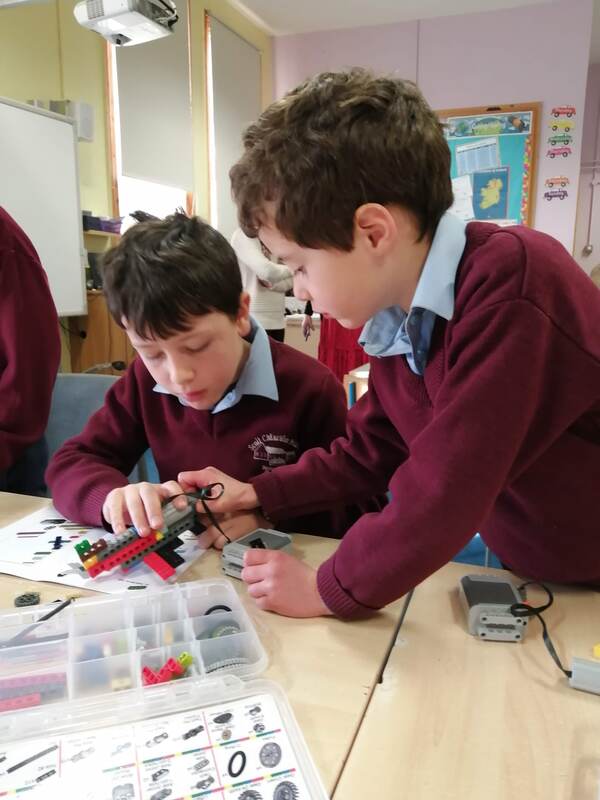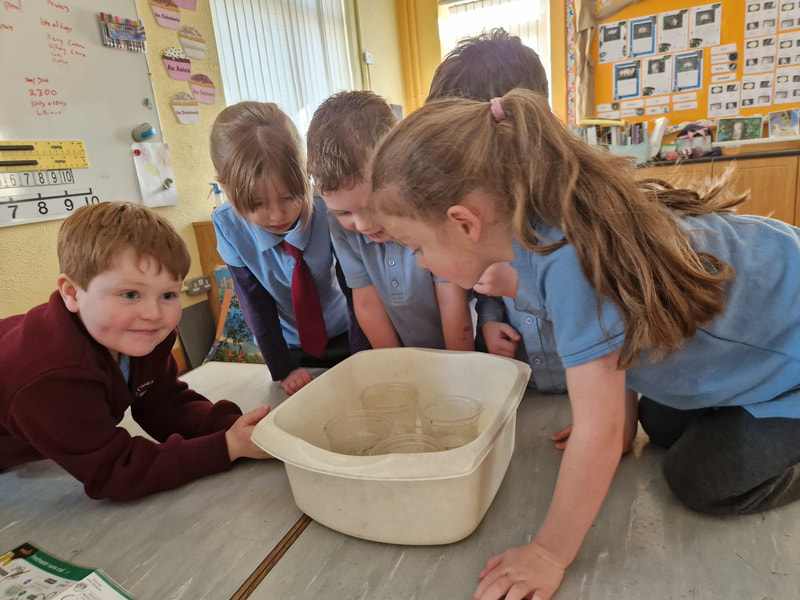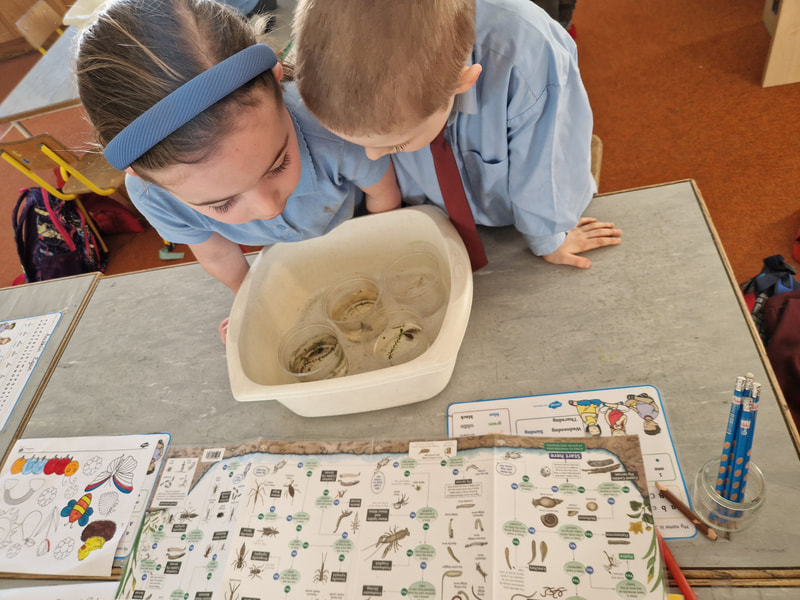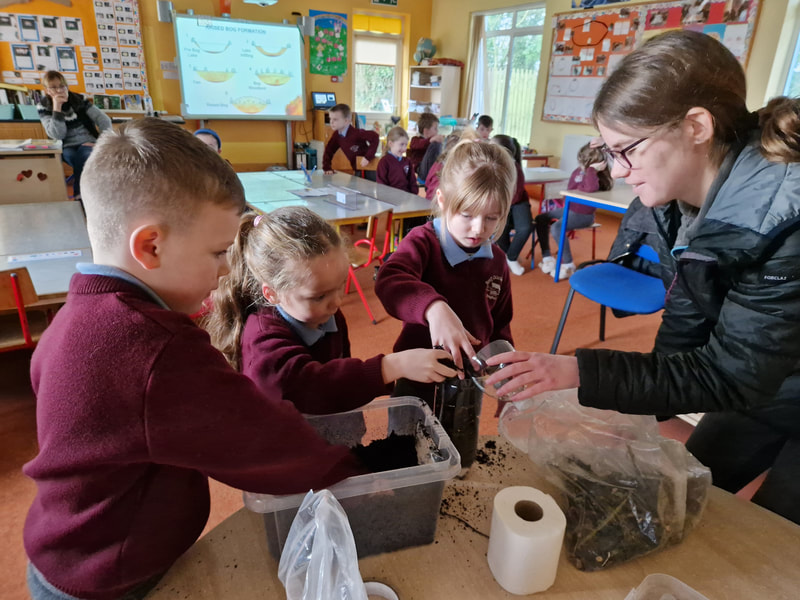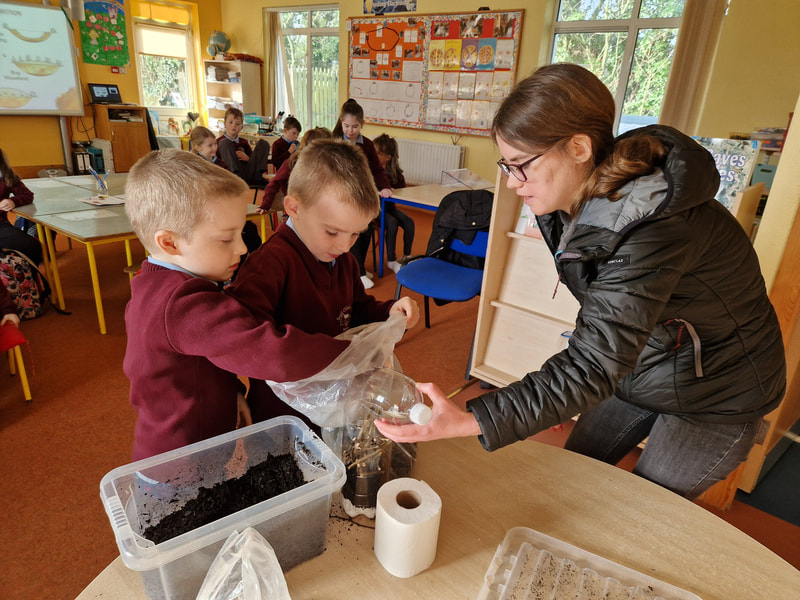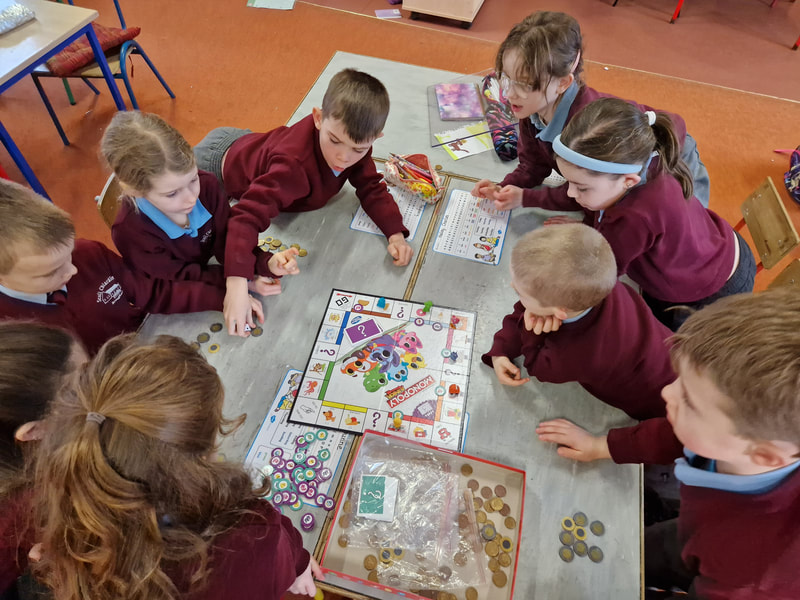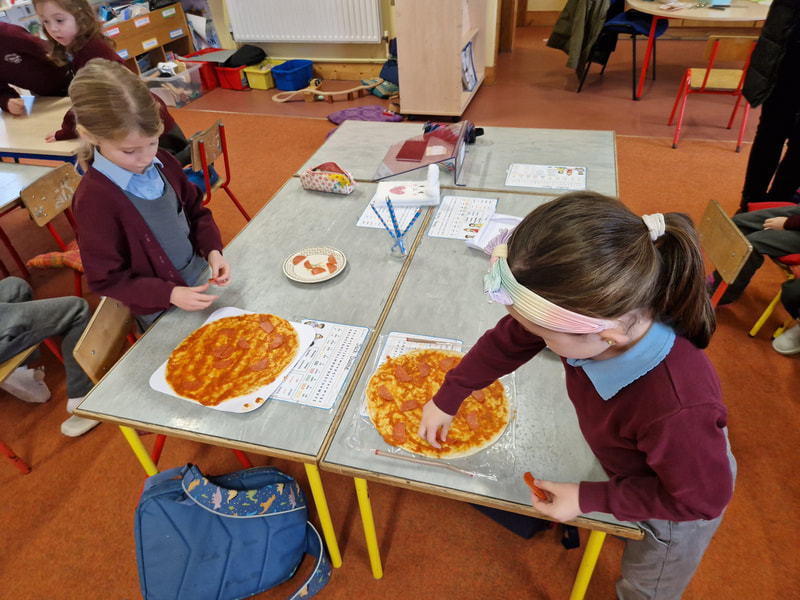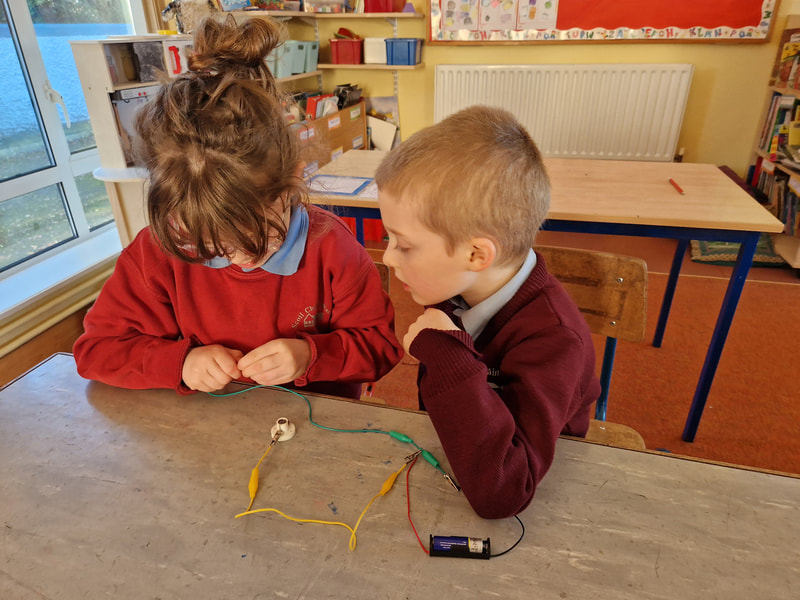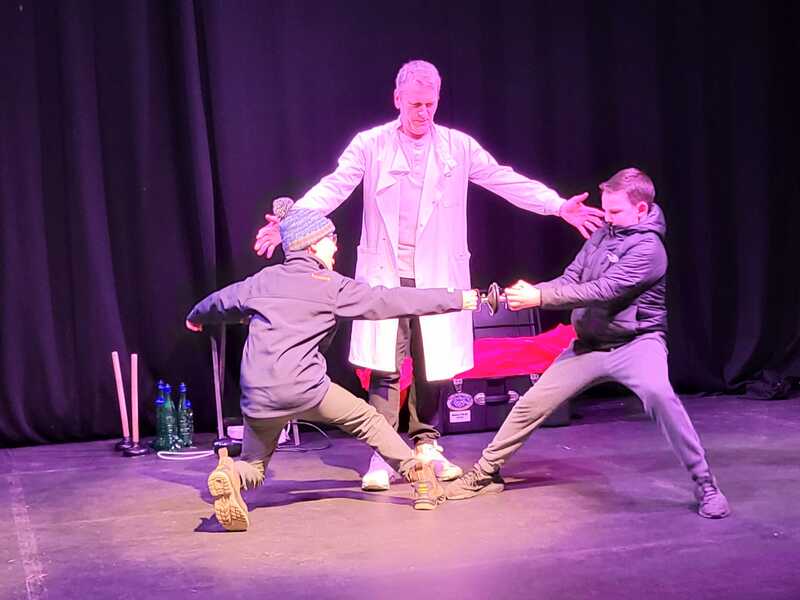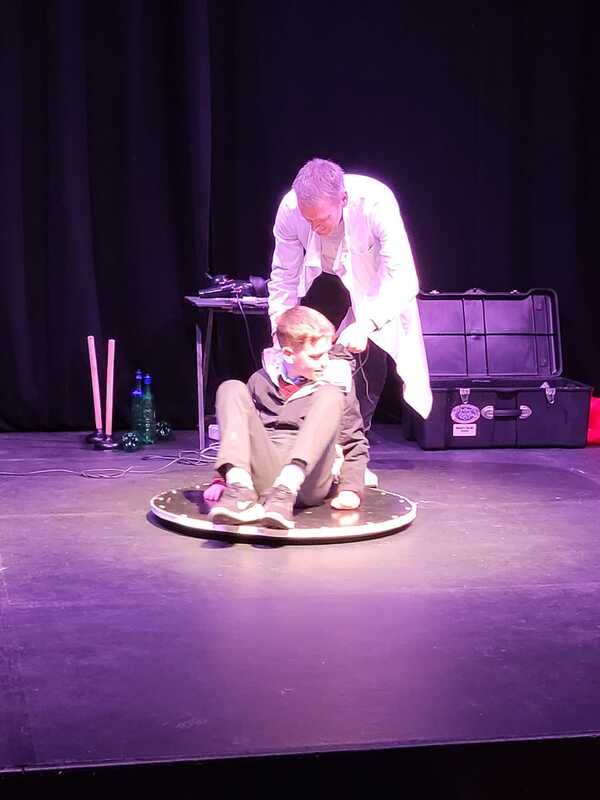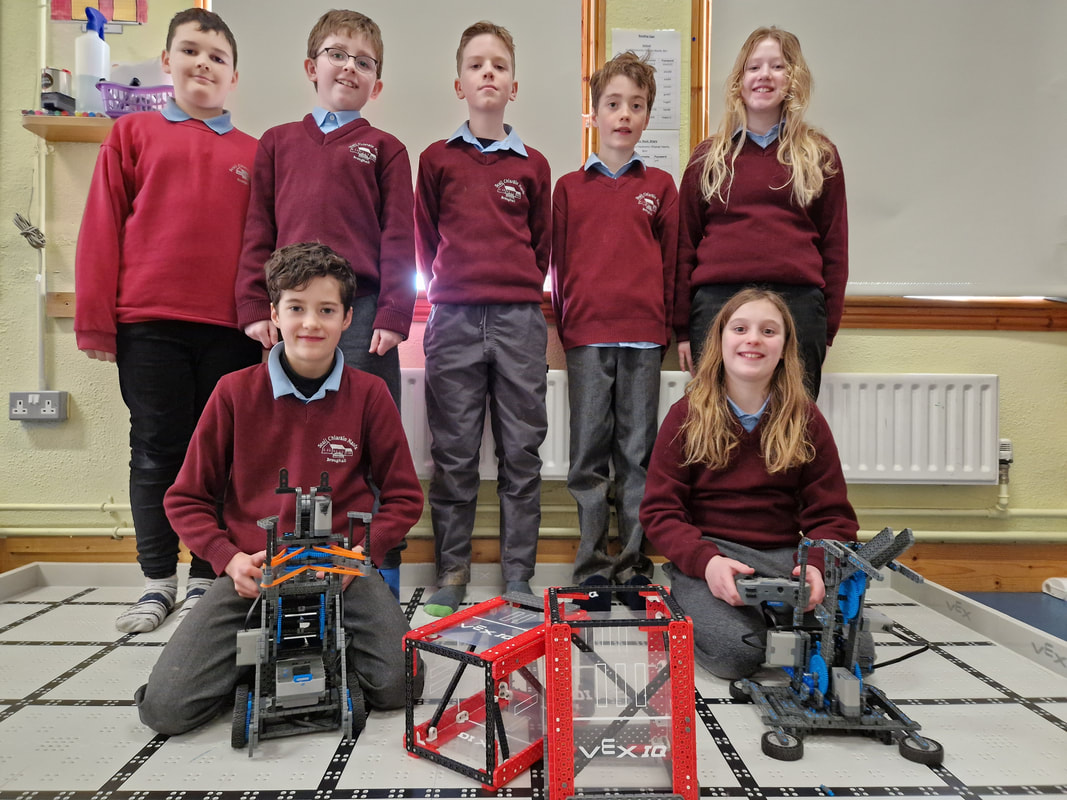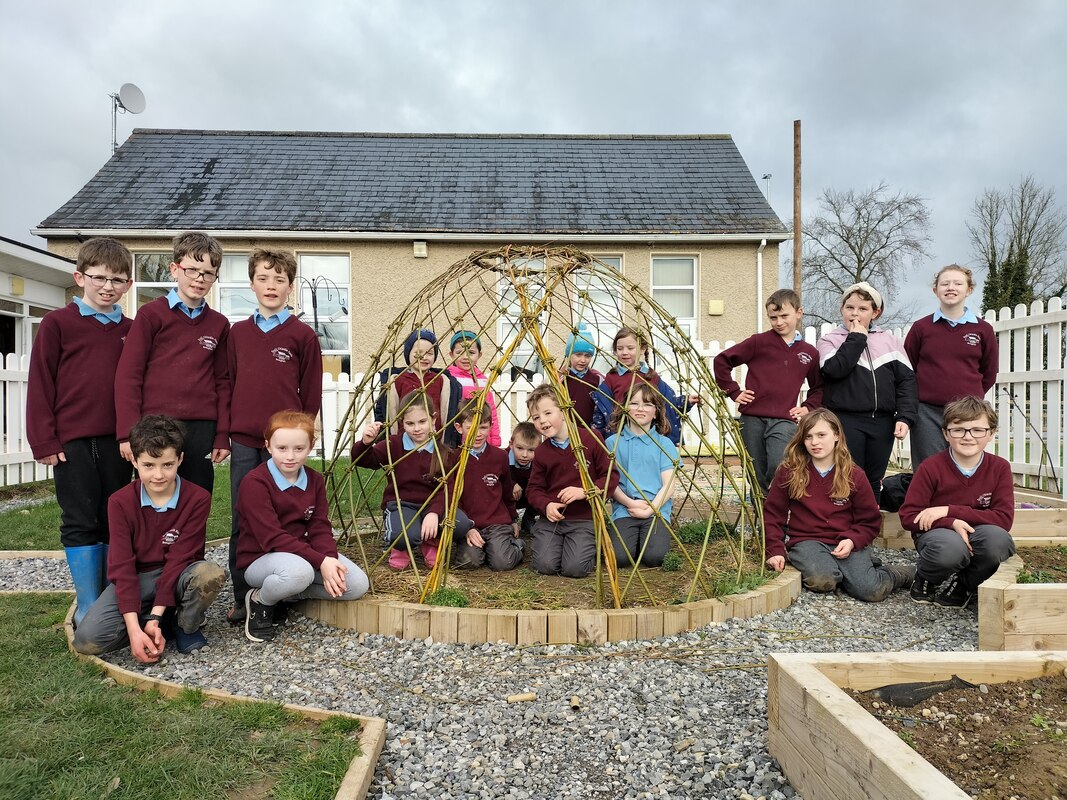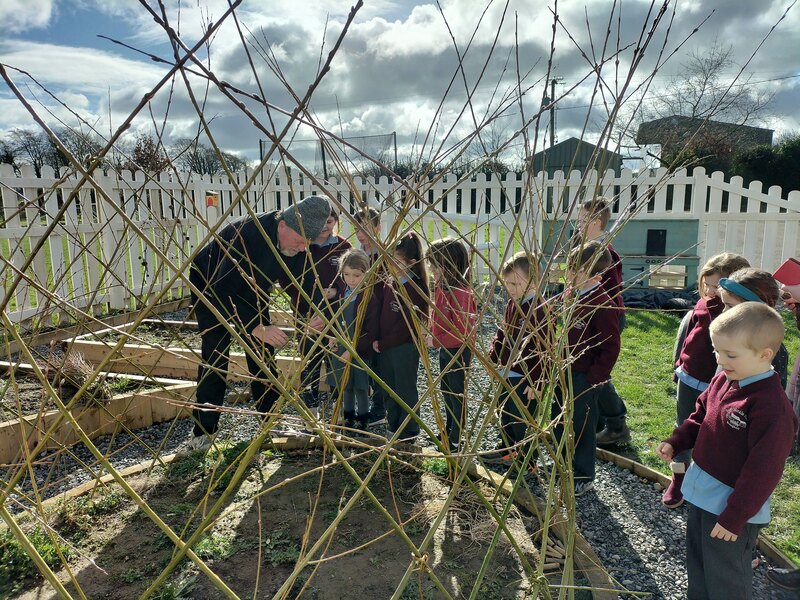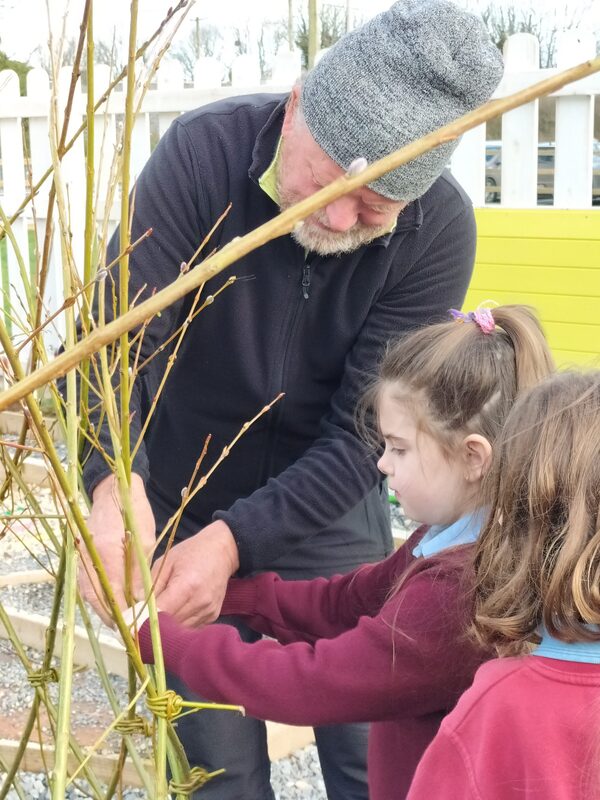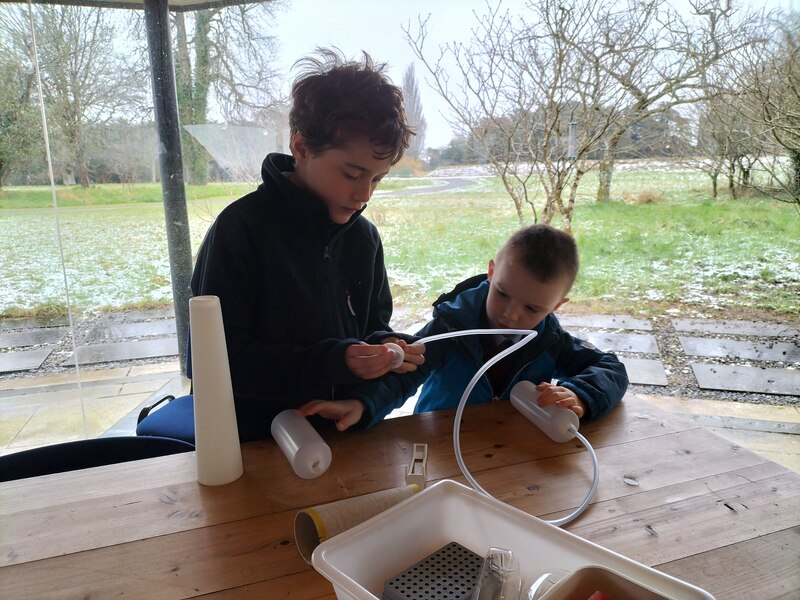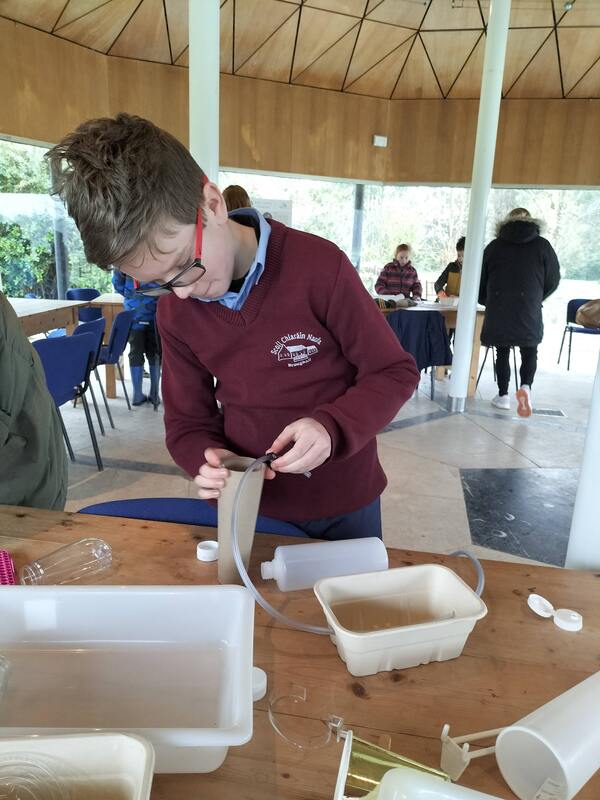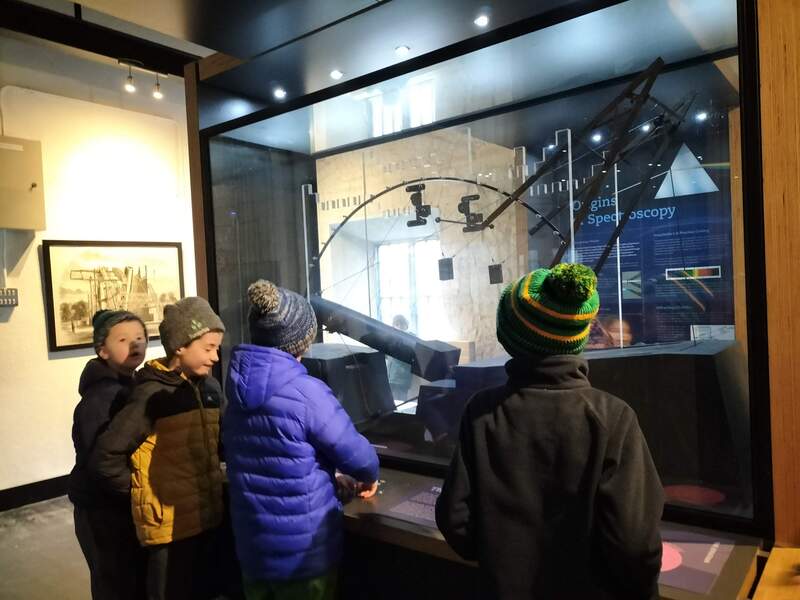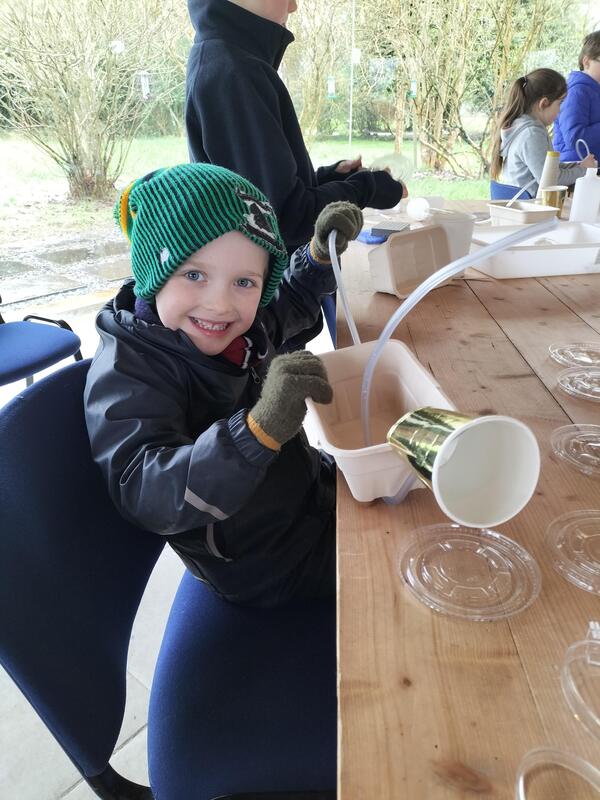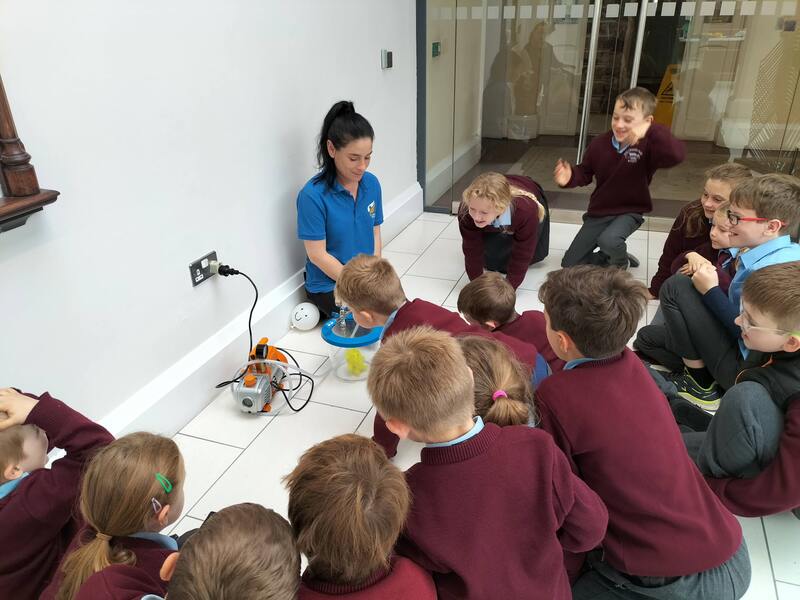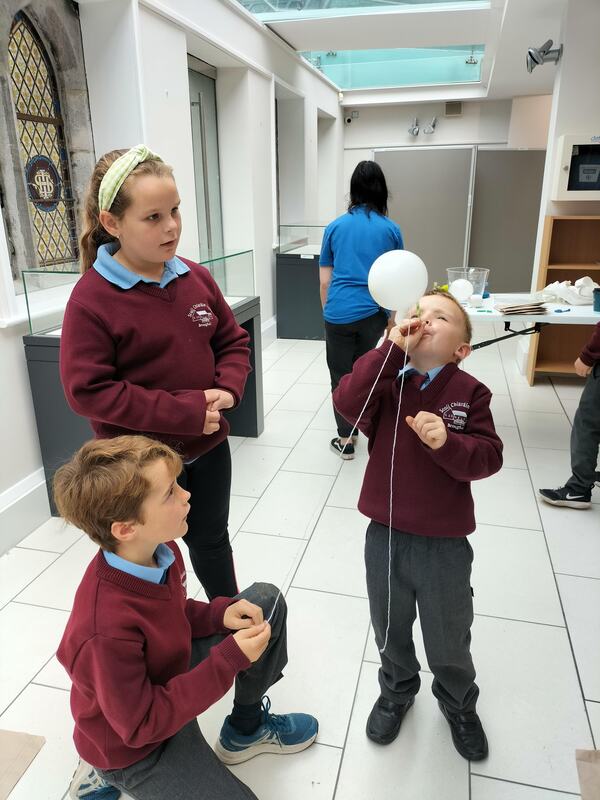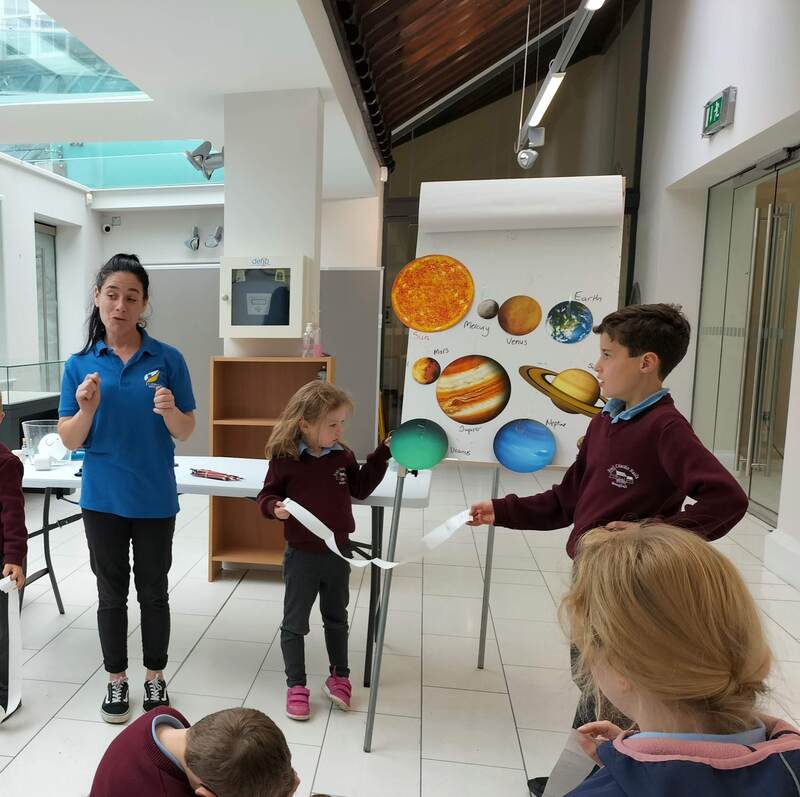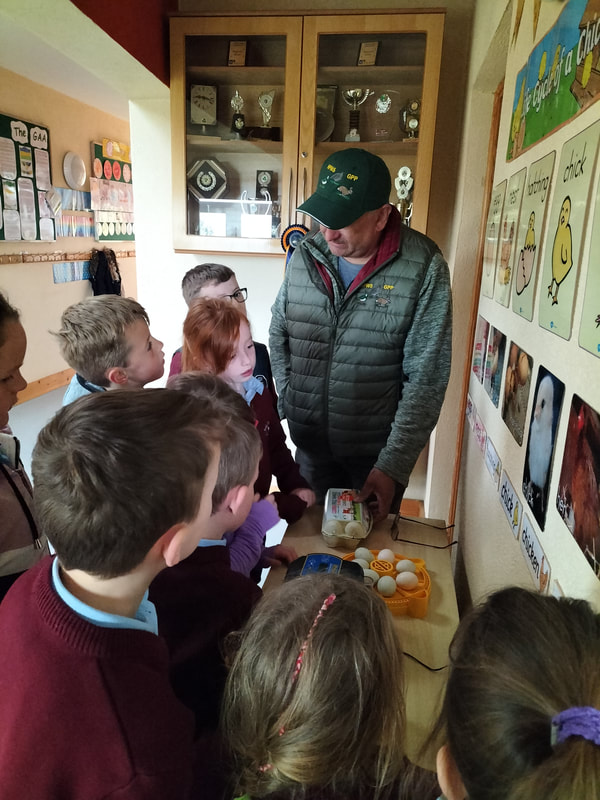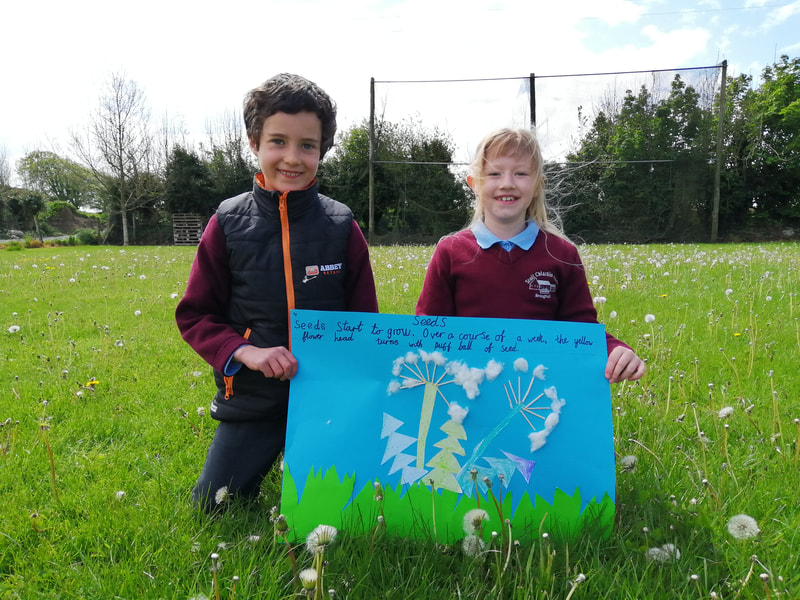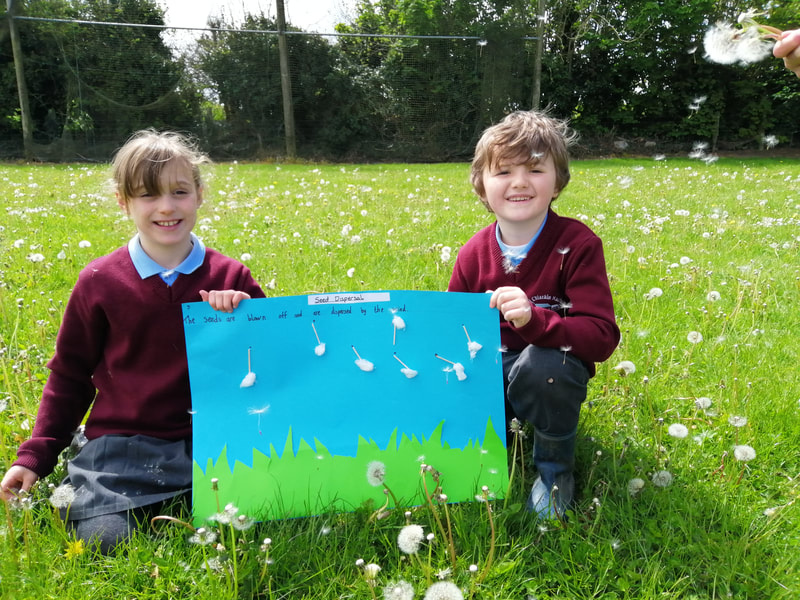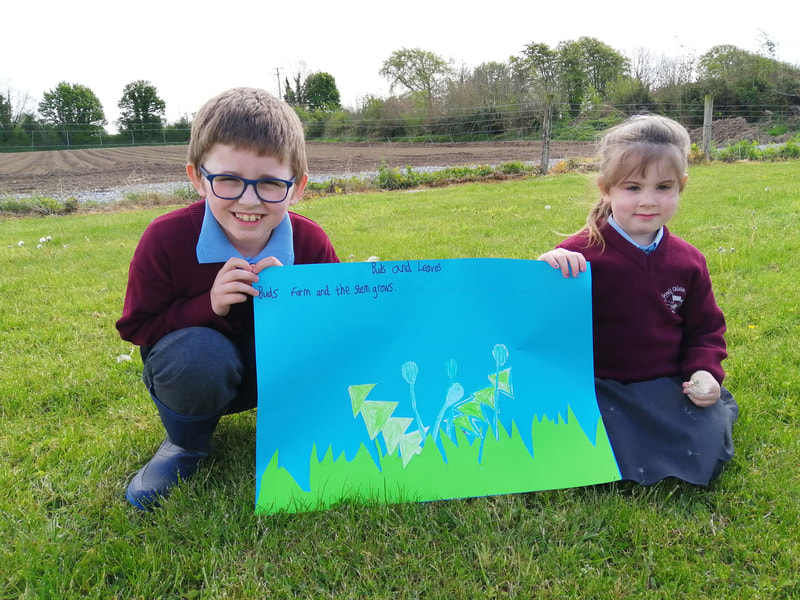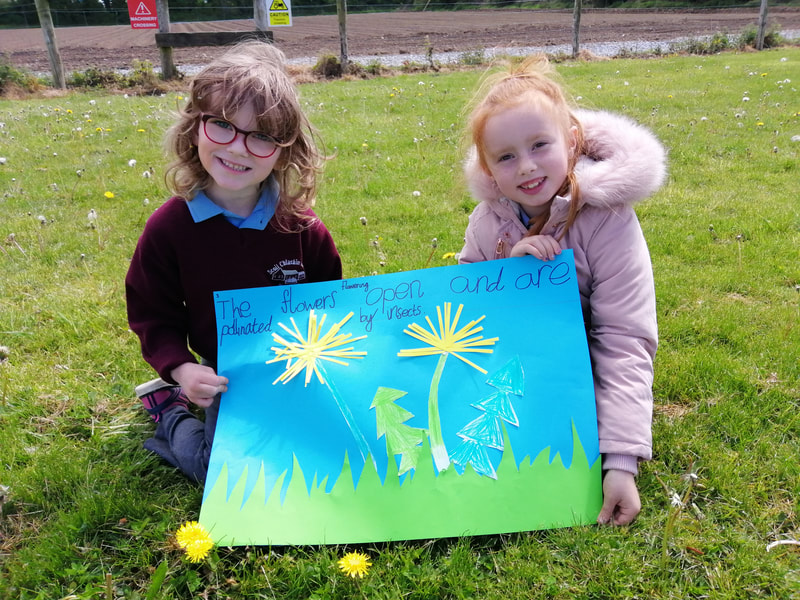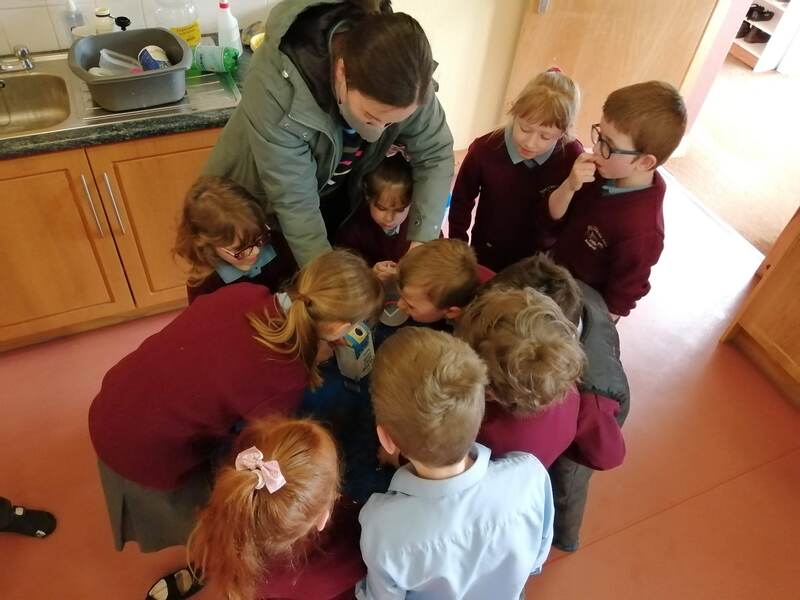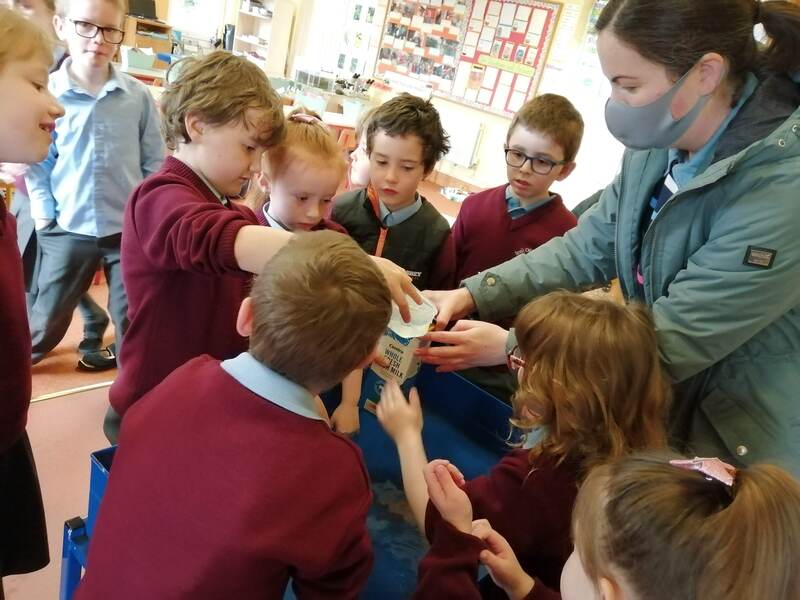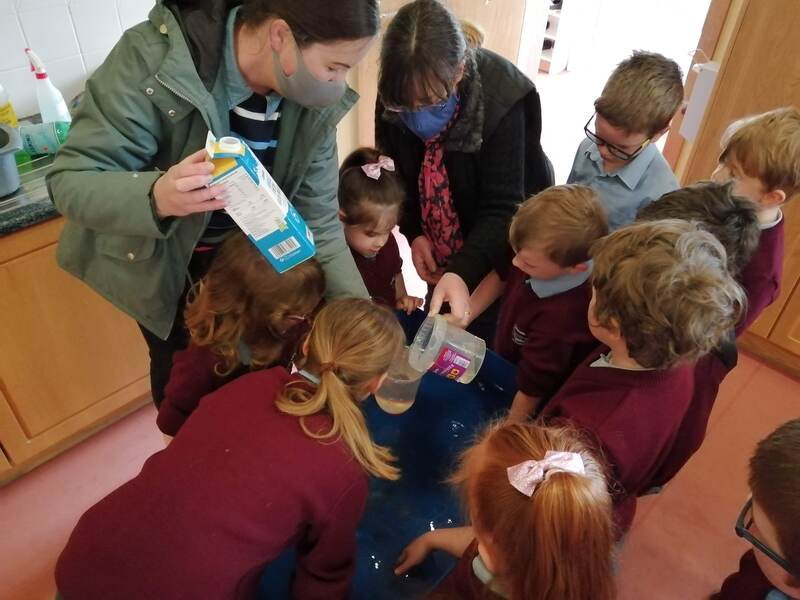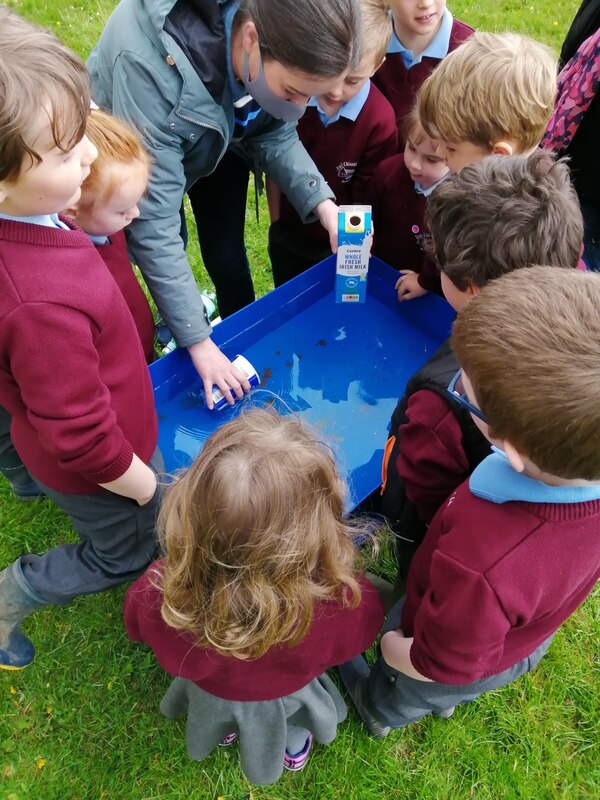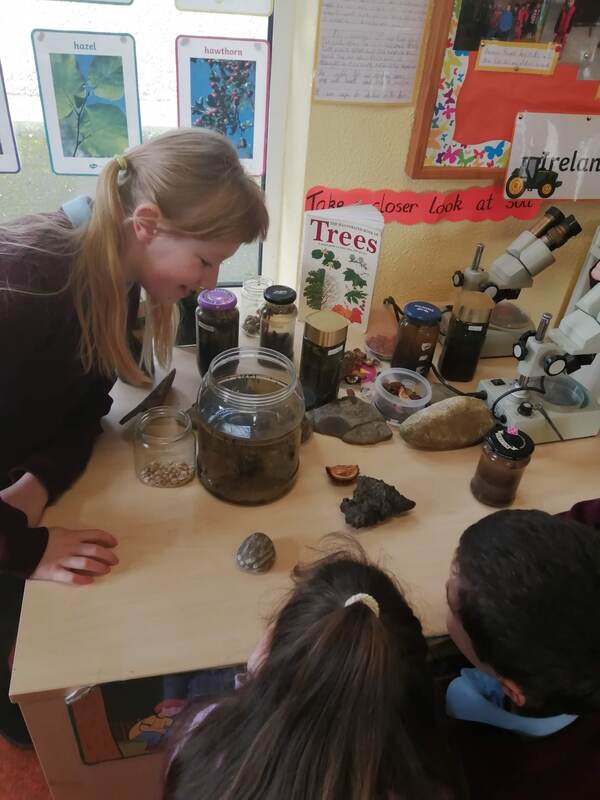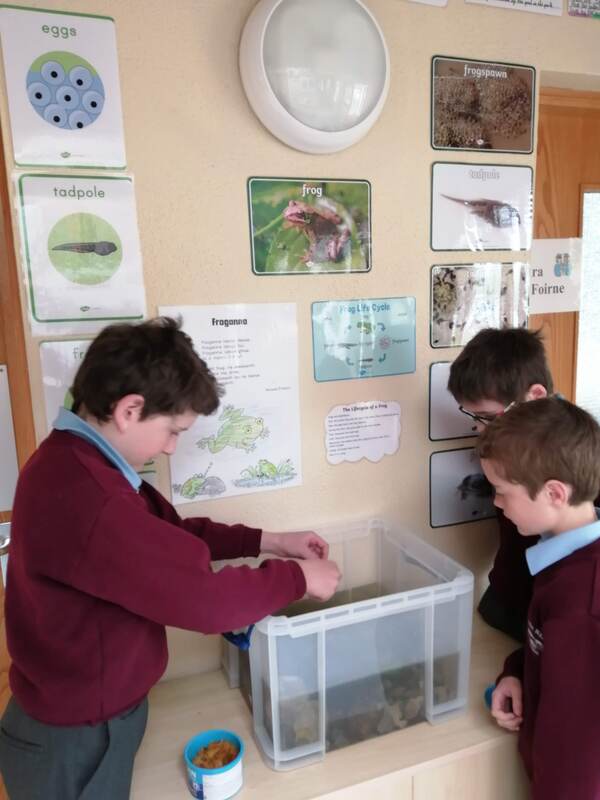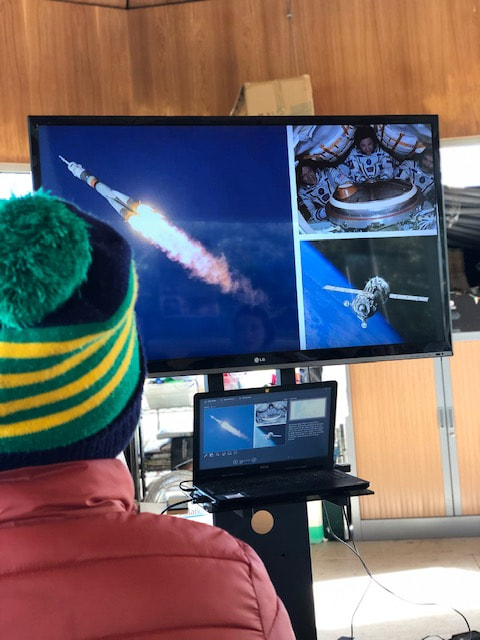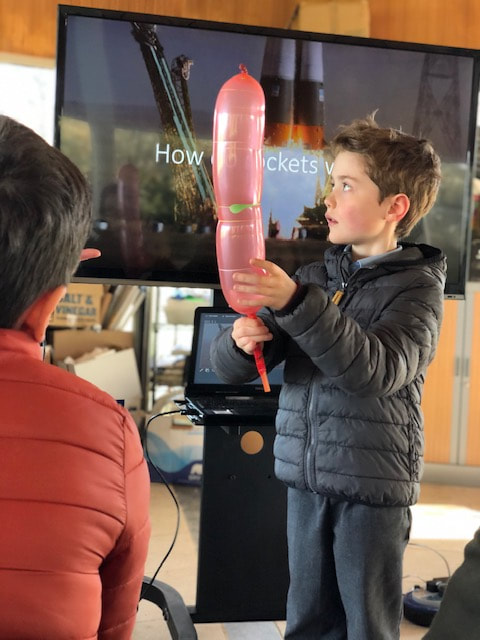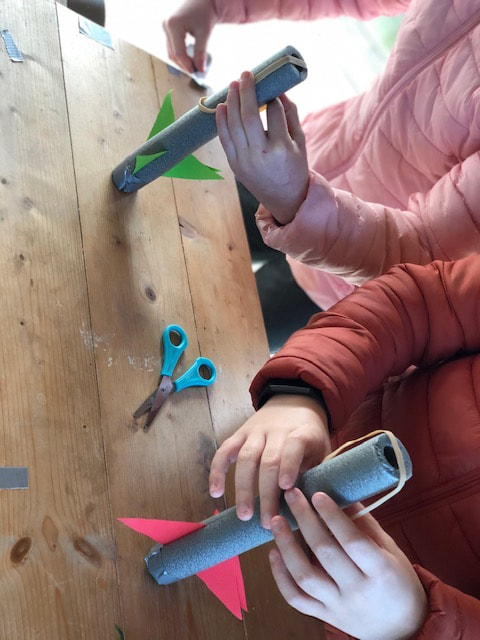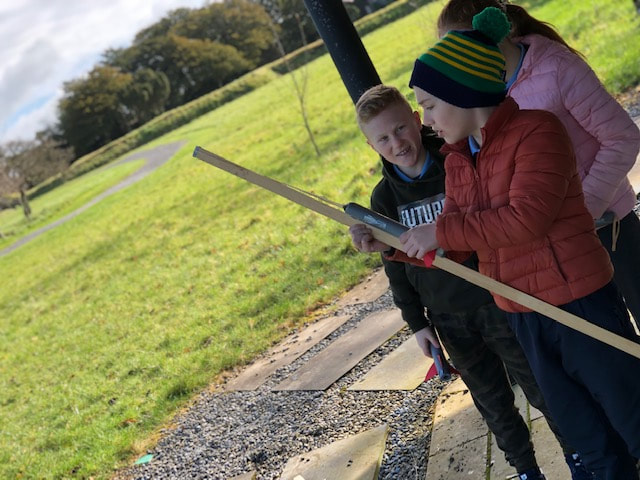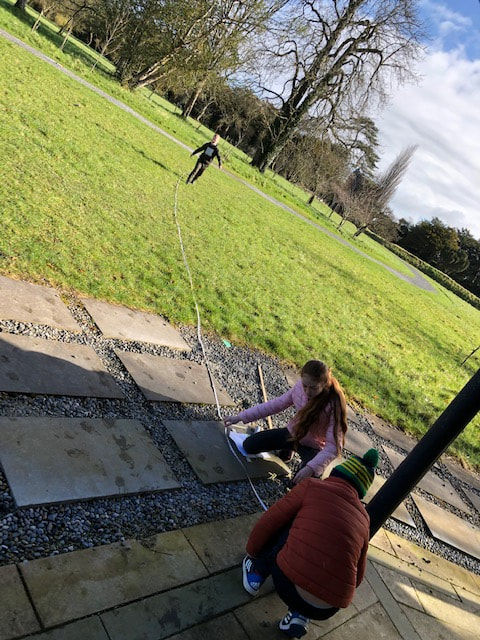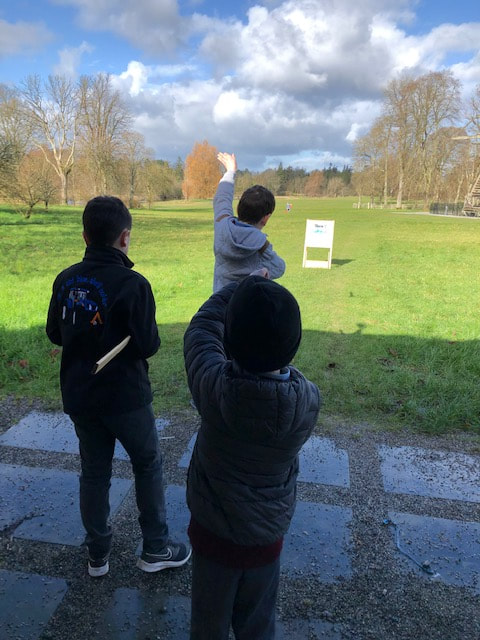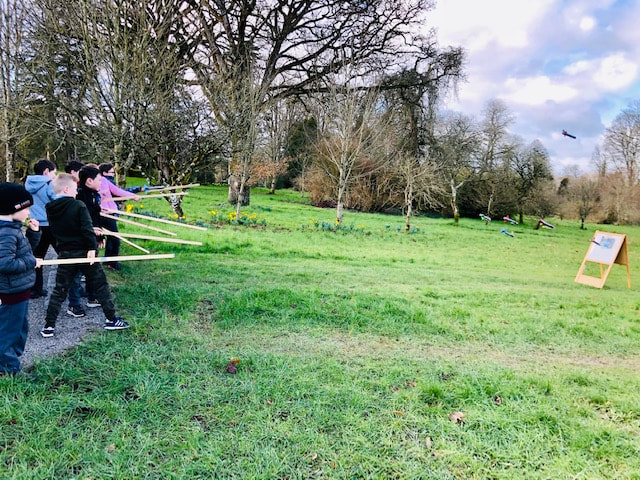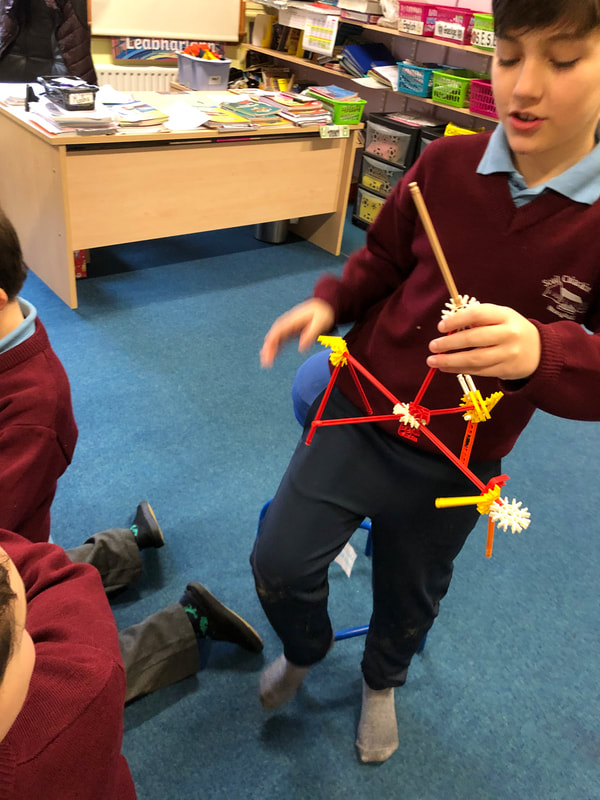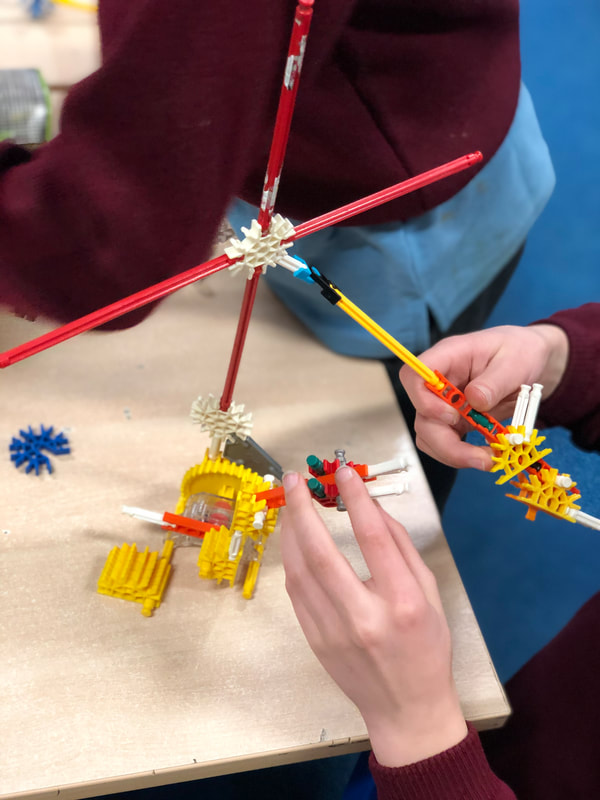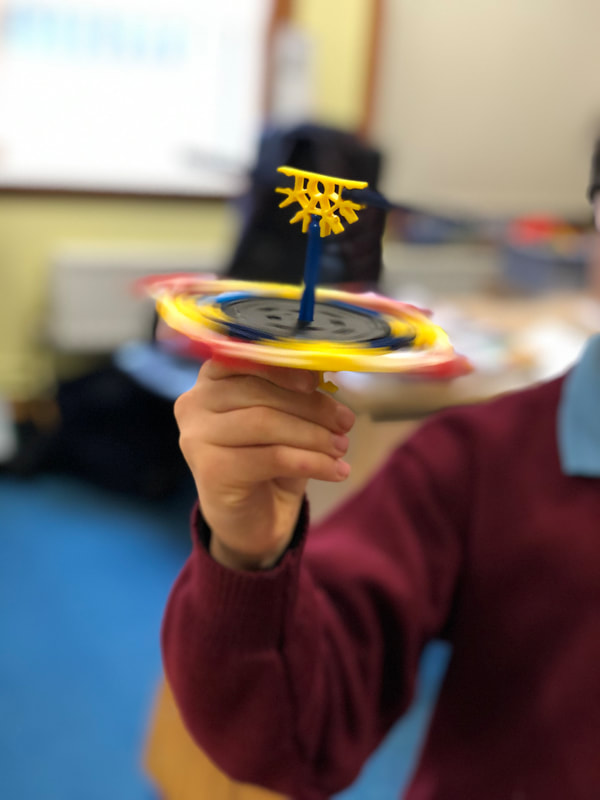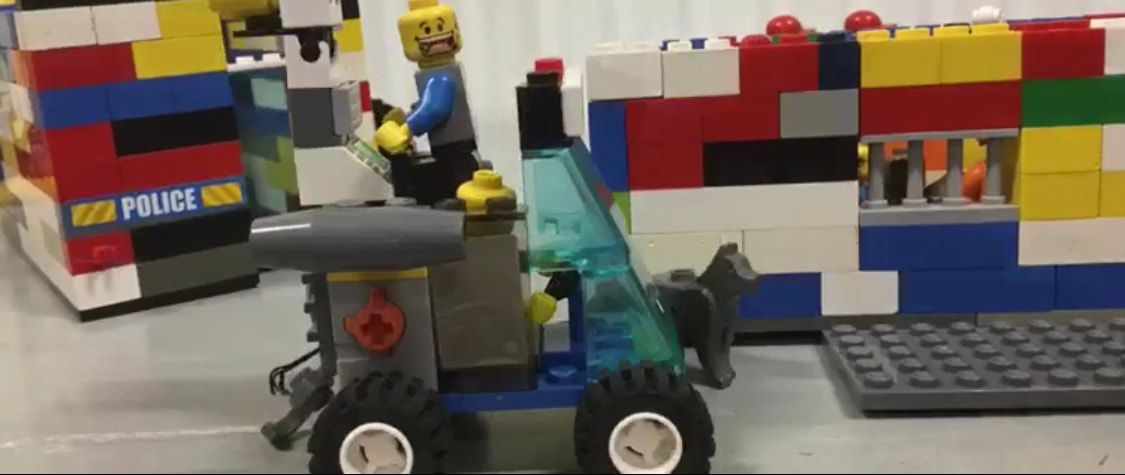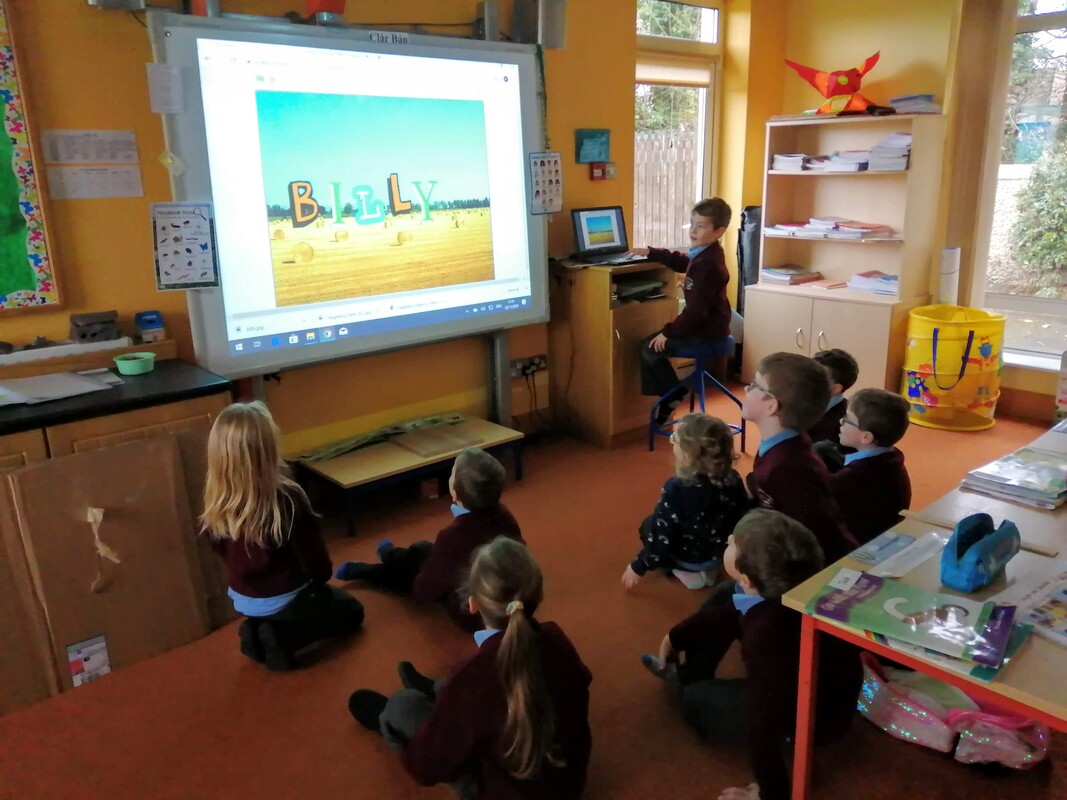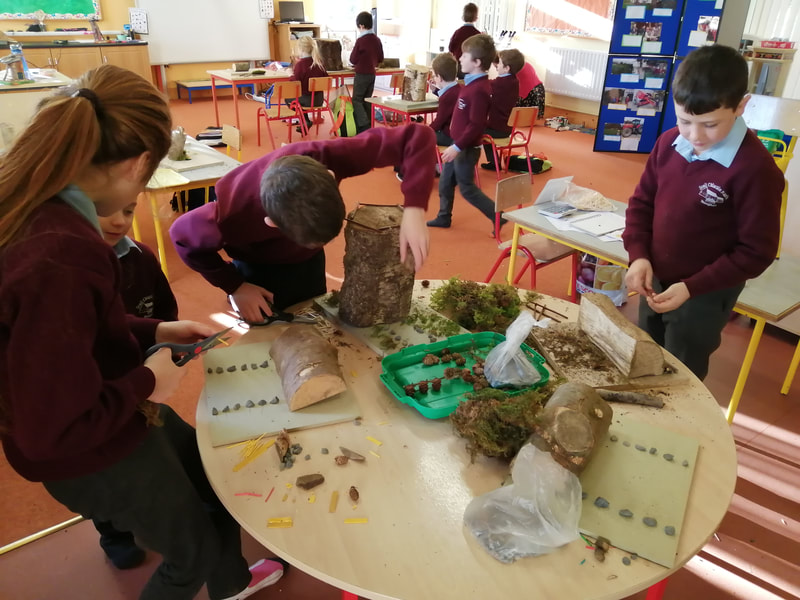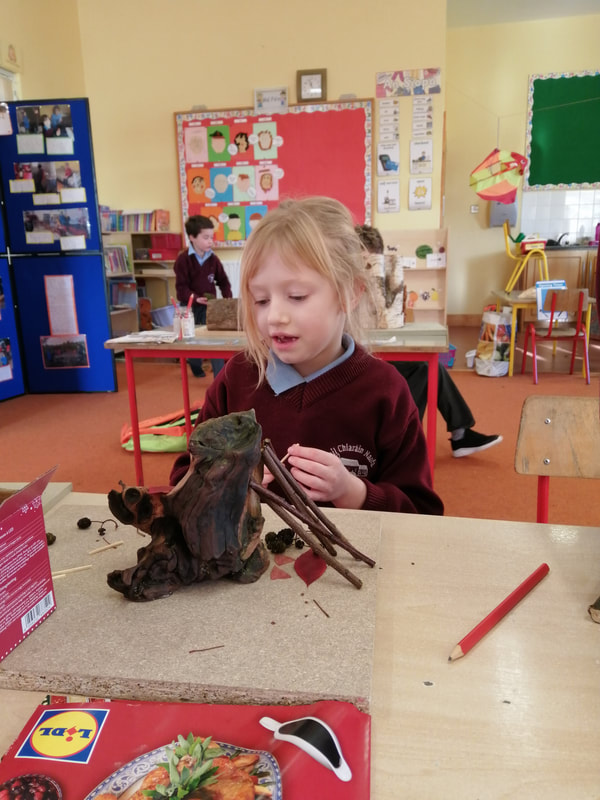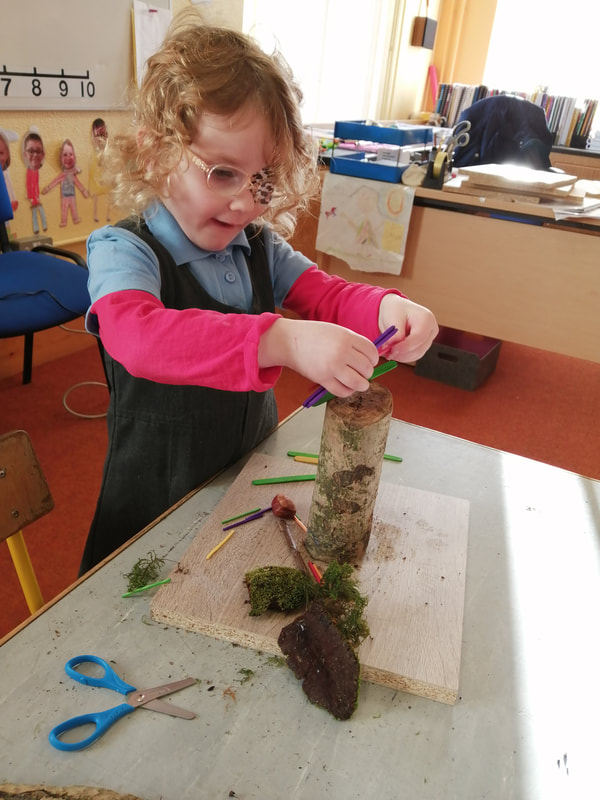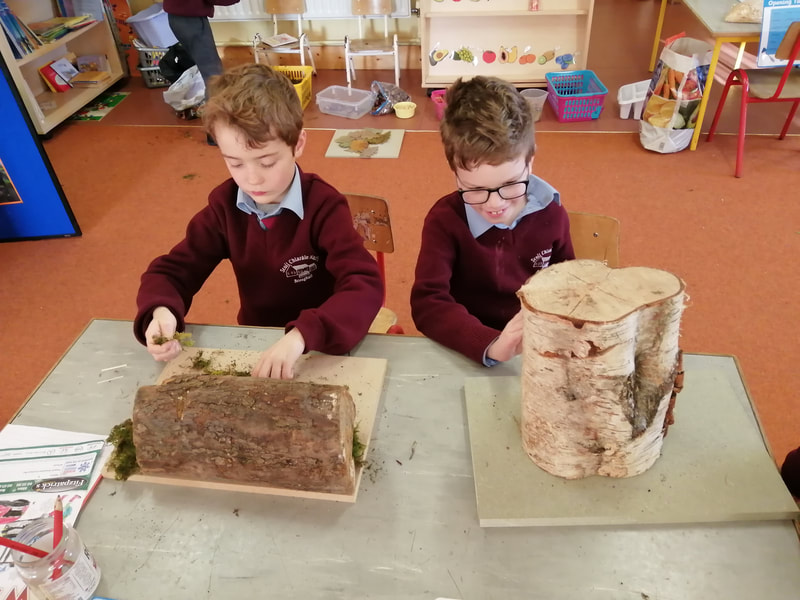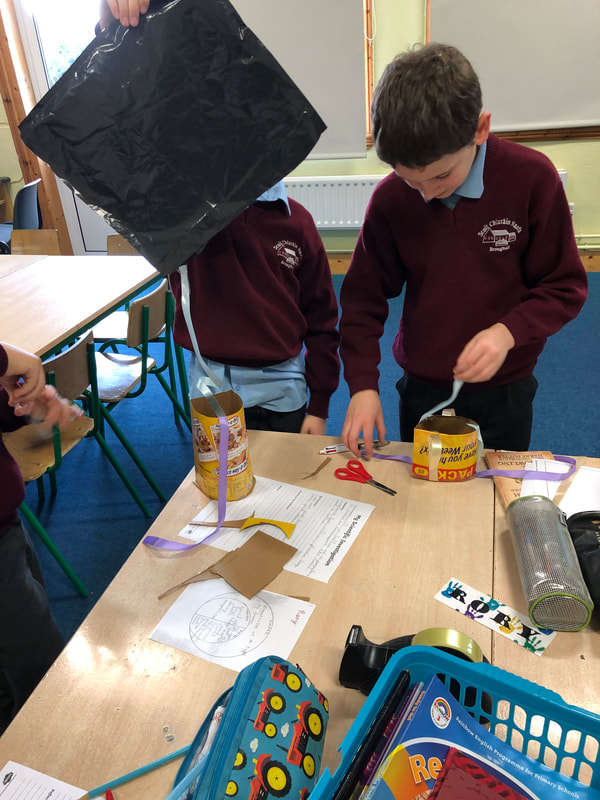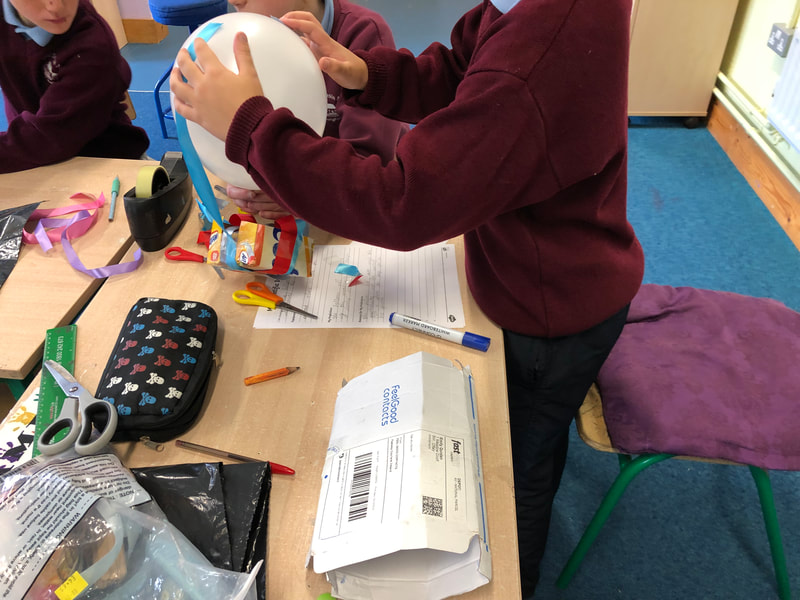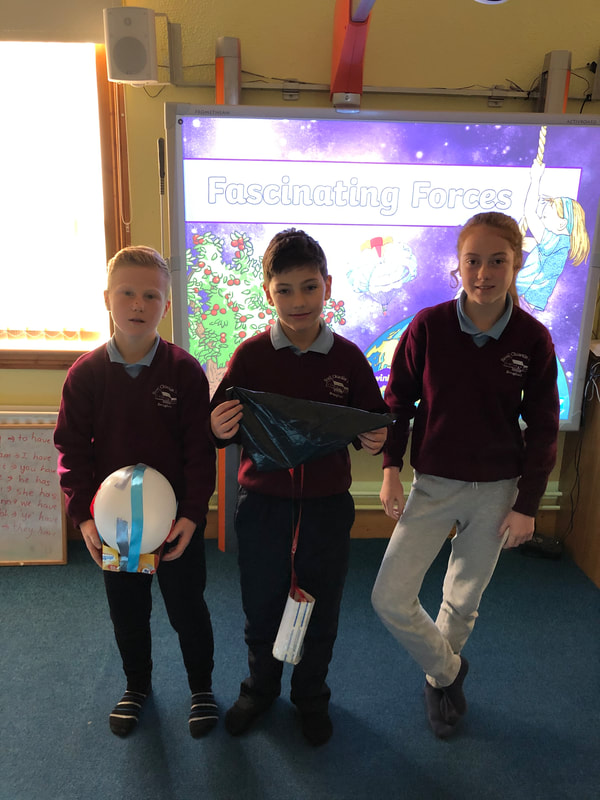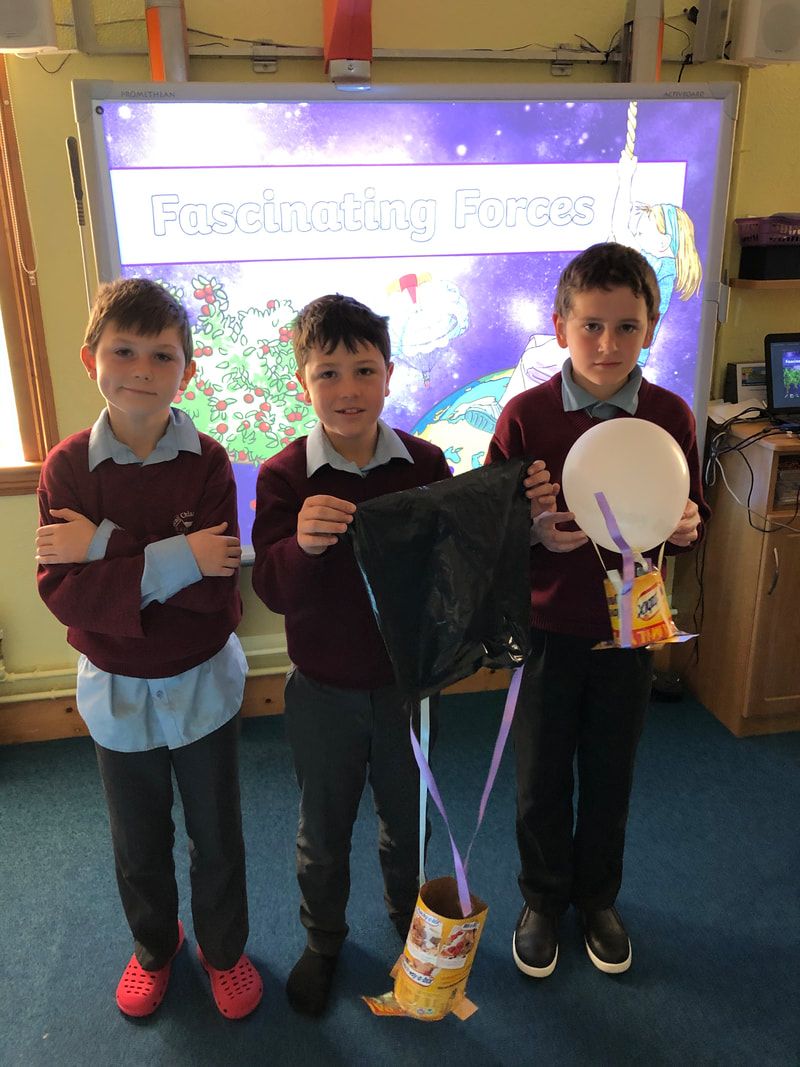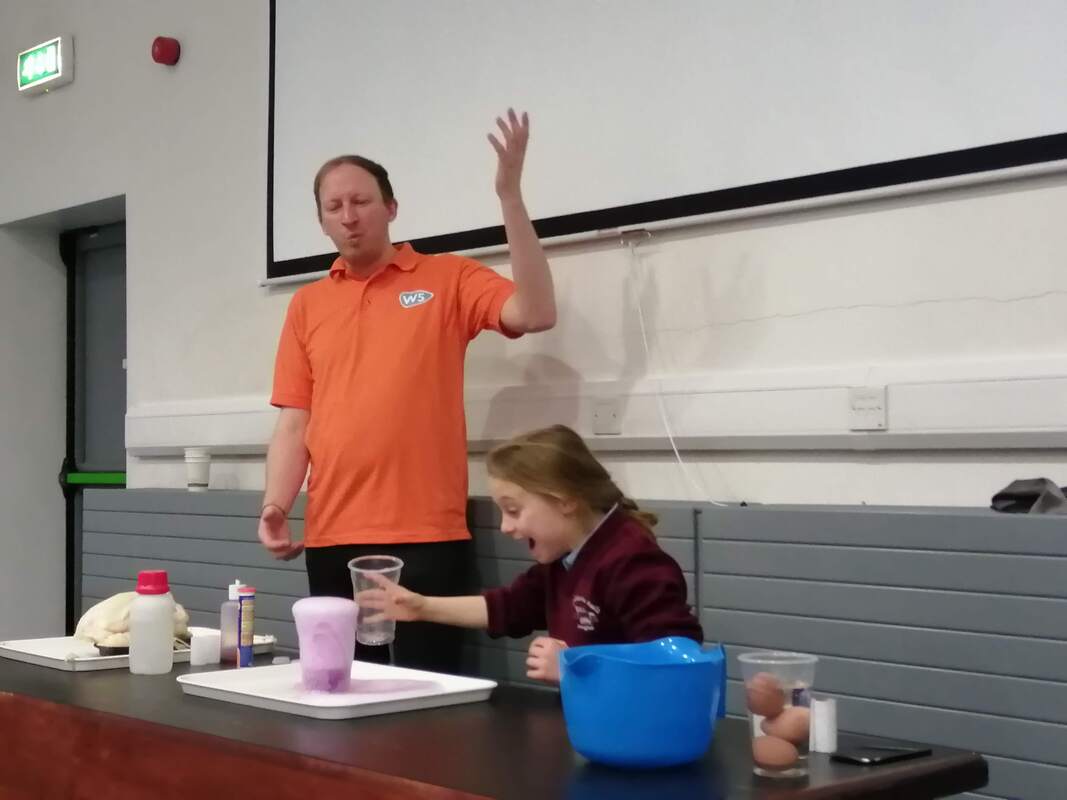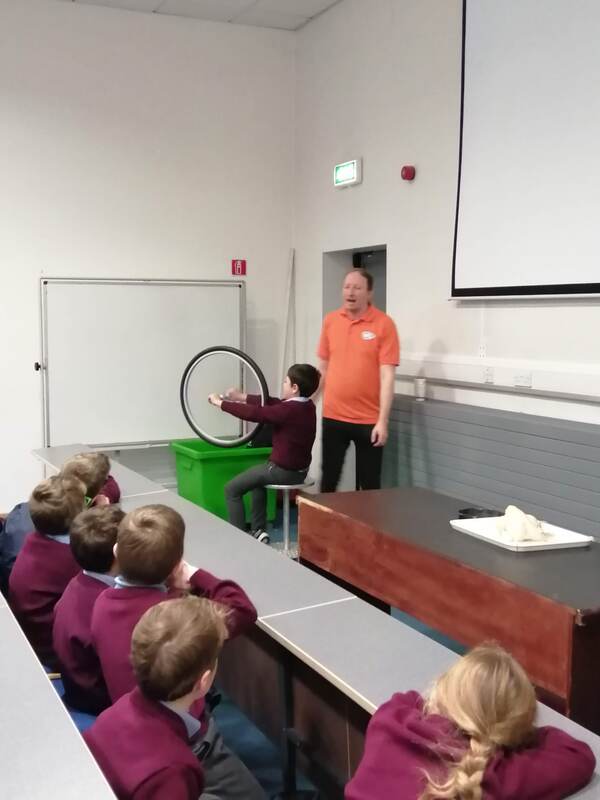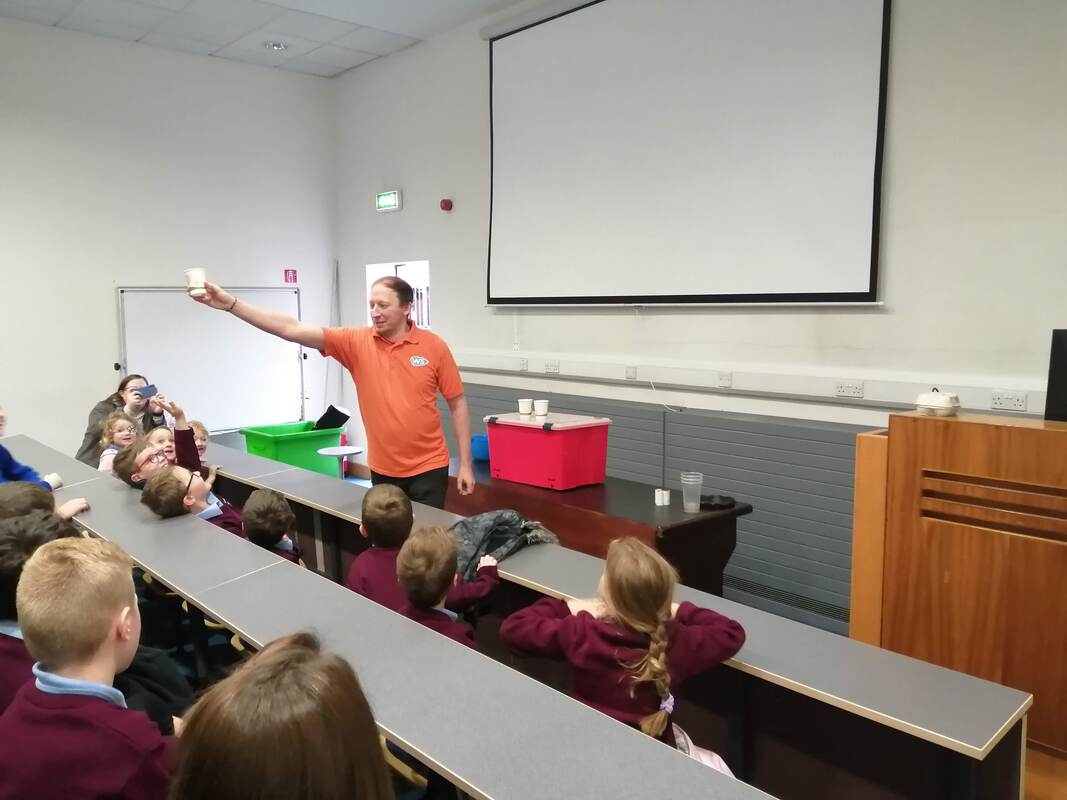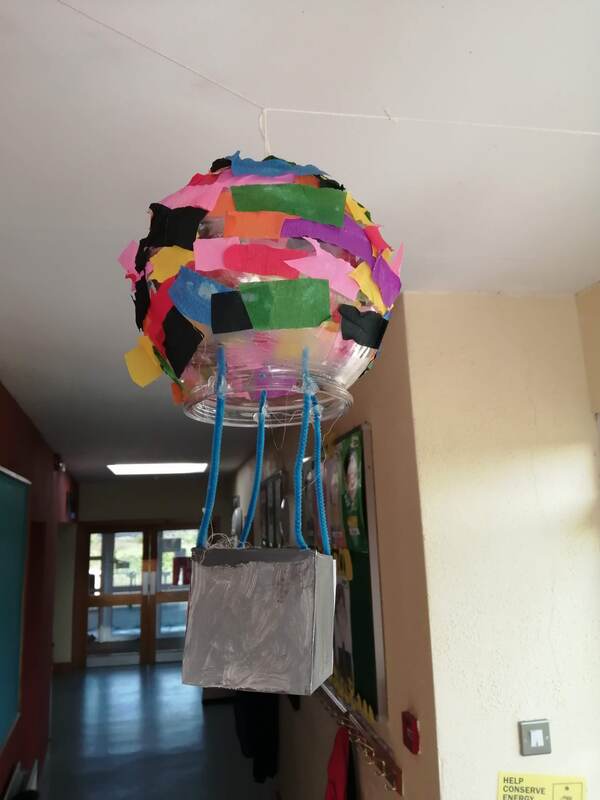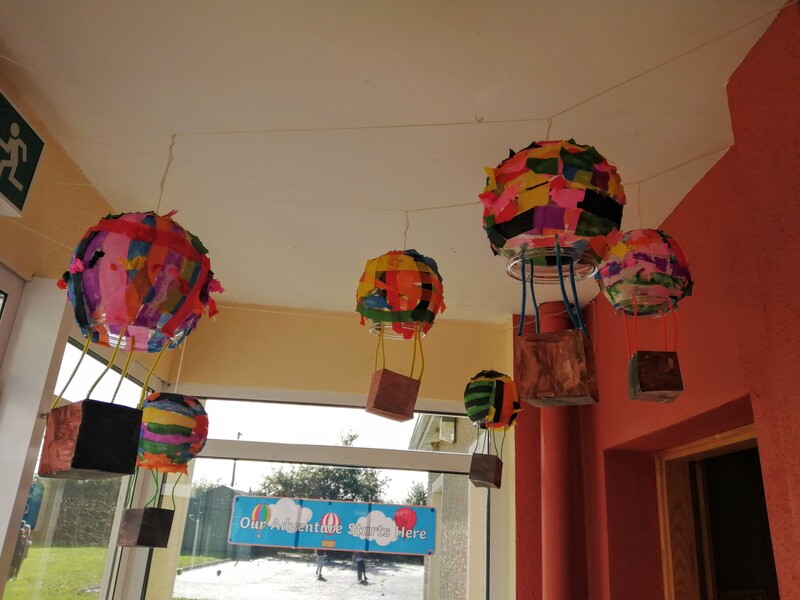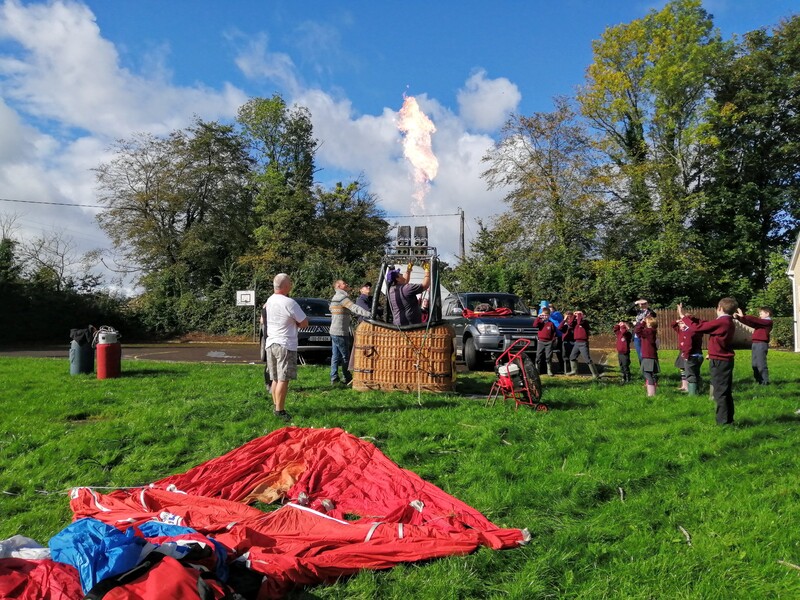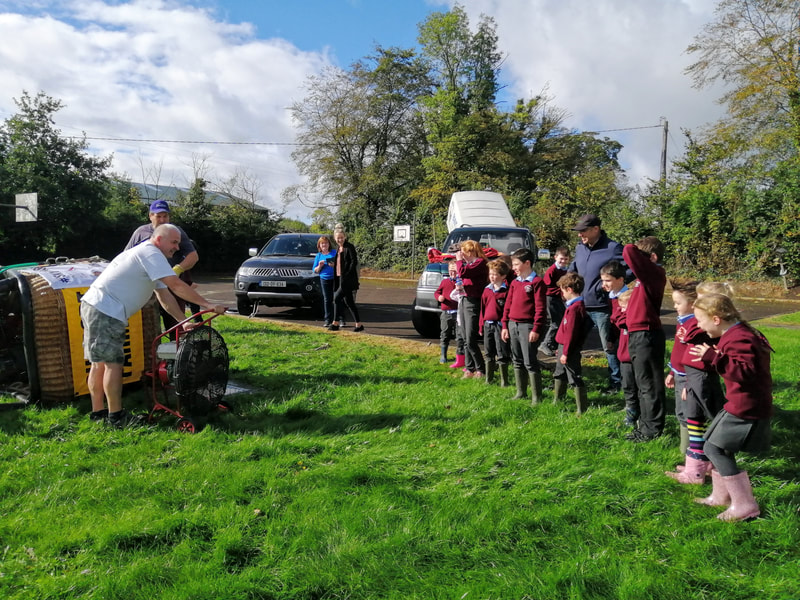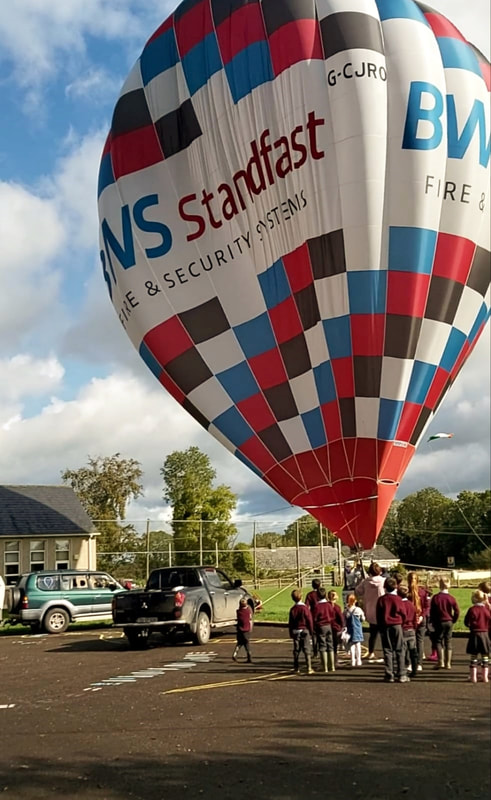Our Bog Project
As a school we are taking on a project all about bogs. We invited Sorcha Doyle, a Heritage Expert on bogs to our school for the day. The children learned so much about bogs. We are now looking forward to our trips to Boora with Sorcha to learn more about our local bogs.
STEM in the Junior Room
In class we enjoyed learning about money while playing monopoly. We have changed the board games so that all the game is using euro and suitable for different abilities. It was great to see them adding money and giving out change while having lots of fun.
We are also learning about fractions and an enjoyable way to get a visual concept of fractions was to make pizza and divide it into fractions when it was cooked. We also used this lesson for procedural writing and the children wrote / drew the procedure to making a pizza, but most of all the children enjoyed eating the pizza.
In Science we are busy learning about electricity in class. The children have enjoyed building circuits and learning what is needed to complete a circuit. As a class we are in the process building the Boora Wind turbines. We are using recycled materials to build the project and we will use our circuits to make the blades move.
We are also learning about fractions and an enjoyable way to get a visual concept of fractions was to make pizza and divide it into fractions when it was cooked. We also used this lesson for procedural writing and the children wrote / drew the procedure to making a pizza, but most of all the children enjoyed eating the pizza.
In Science we are busy learning about electricity in class. The children have enjoyed building circuits and learning what is needed to complete a circuit. As a class we are in the process building the Boora Wind turbines. We are using recycled materials to build the project and we will use our circuits to make the blades move.
Science Show
On the 7th of February the Senior Room visited Birr Theatre to attend a Science show entitled “Where Is The Air?” which introduces the children to 1. Air and 2. Pressure. The Mad Scientist used giant wind bags, vortex generators and even a hovercraft to help the children understand the power of air.
VEX
The boys and girls in 5th and 6th class are taking part in the Vex competition again this year. The VEX Robotics Competition is presented by the Robotics Education and Competition Foundation. Each year, an exciting engineering challenge is presented in the form of a game. Students, with the guidance from their teacher, build an innovative robot to compete in competitions. The boys and girls have been working hard with Ms. Toohey in getting their Robots ready for the competition.
Our Willow Dome
The boys and girls were delighted to have participated in the making of their willow dome in their school garden. Thanks to Padraig for haring his talent with the boys and girls.
Engineering Workshops
The boys and girls really enjoyed participating in the Engineering Workshops in Birr Castle today. Well done boys and girls.
Astronaut Academy
On the 6th of October all pupils attended ‘Astronaut Academy’ in Birr Library. We attended the workshop as part of Space Week. The boys and girls worked in teams to make their own rocket. They also created their own Solar System and they carried out an experiment to show why it is so important for an Astronaut to wear a space helmet and suit. Thanks to the Board of Management for covering the cost of this trip.
Hot Air Balloon
We had an exciting day in Broughall NS today. We were delighted to have Donna, Tara, Stuart and Tony visit our school with their Hot Air Balloon. The children were very excited. They got the opportunity to ask the team lots of questions. They also got to see first hand how a Hot Air Balloon works.
Our Baby Chicks
All of us in Broughall NS were delighted to welcome our baby chicks into the world as they hatched out last week. The boys and girls are showing great care and respect for our new arrivals as they look after them in the early stages of their lives. Well done boys and girls.
Our Biodiversity Workshop
Today all children took part in a Biodiversity Workshop. The boys and girls really enjoyed learning all about the different types of trees and habitats within our school grounds. Thanks to Judith from Biodiversity for Schools for conducting the workshop.
Our Hatchery
In school we are learning all about the lifecycle of a chicken. We are using our incubator to give the children the experience of seeing chick hatch out. The boys and girls are great at keeping an eye on the temperature of the incubator and making sure that the water is topped up regulary. Thanks a million Kevin for supplying us with the eggs and answering lots of questions from the boys and girls.
THE LIFECYCLE OF THE DANDELION
Fun with Capacity
This week pupils were learning all about capacity. We collected lots of different containers of different shapes and sizes. As a class we discussed what containers held the most, the least and which containers held the same amount of water. The children had lots of fun measuring how much water it took to fill the containers.
The Lifecycle of the Frog
As we enter the summer season, we in Broughall NS are learning all about different lifecycles. We studied the lifecycle of the frog in detail. We obtained frogspawn from the lake in Lough Boora and over the past few weeks the children observed the frogspawn developing into tadpoles. The children are now witnessing the tadpoles develop into froglets. Very soon we will release these froglets back to their natural habitat in Lough Boora.
Engineers Week
For Engineers Week 2020 students visited Birr Castle for an engineering workshop. They learned the history and science behind a rocket launch, designed and launched their own rockets and had an incredible time doing so.
Explorium National Sport & Science Centre
With over 300 eye-popping interactive science and STEM experiences, our day at the Explorium was phenomenal! Students visited the amazing Gravity Rooms, the Live Science Show, the G Force, and the Lightening show to name but a few. Students explored the interactive activities which improved understanding of scientific concepts and encouraged curiosity in all students from Juniors up the 5th class.
Lego Workshop
Bricks 4 Kids came to our school to give a Lego workshop based on planes. Students learned about the Wright Brothers who were both designers and engineers. They discussed the first successful flight, created planes using Lego and then attached motors for movement. Students had the opportunity to customize their planes and engage in the engineering process through Lego. This was a fun and exciting way to learn about the engineering process!
Lines and Angles
Students explored various lines and angles in maths recently. They brainstormed different jobs, such as an engineer, where knowledge of lines and angles would be necessary to be successful. To demonstrate their understanding, students became engineers and had to design an object using K'nex that incorporated what they learned. It was brilliant to see the pupils using their math vocabulary and applying their skills in a real-life situation. Have a look at some of the fabulous creations.
Conductors and Insulators
In connection with the 'Farm to Fork' initiative in the school where pupils made soup from locally sources vegetables, pupils also used this as an opportunity to be creative. Students designed an insulated container using different materials such as cling film, cardboard, tinfoil, Styrofoam etc. to keep their soup hot. They tested their soup and recorded the temperature every five minutes for half an hour. The container that kept the soup the hottest after the thirty minutes was the winner of our competition. The winning container used a combination of bubble wrap and Styrofoam, both of which are excellent insulators.
Solar Ovens
Using pizza boxes, black paper, cling film, tinfoil and newspaper, pupils made their very own solar oven. Students had been learning about heat transfer, conductors and insulators and they put their knowledge to the test. The tinfoil reflected sunlight into the box which was sealed with clingfilm. This plastic "window" worked like a greenhouse roof, allowing (direct and reflected) sunlight to pass into the box, while also retaining heat. The black paper attracted/absorbed the heat and the newspaper acted as an insulator along the inside of the box It was a great way of using solar energy.
Stop Motion
This has been the most exciting S.T.E.M project so far! The students created a village using Lego, then devised a cunning story line to use for our Stop Motion project. Stop Motion requires numerous pictures being taken and played as a slideshow in order to create a movie. The students were extremely patient and worked well as a group as they had to take over 100 pictures of their Lego. This is just a snippet of what they have created:
| img_1928.mp4 | |
| File Size: | 1948 kb |
| File Type: | mp4 |
Scratch
Well Done Billy for creating your first 'Scratch' project.
Our Fairy Village
Pupils got creative making their own fairy house. Pupils used lots of natural materials from our woodlands. The senior room were a great help to the junior pupils during the task. All the fairy houses look great.
Fascinating Forces
During October, the students in the senior room experimented with forces such as gravity and air resistance. Working collaboratively, the students had to design a parachute and a hot air balloon using various resources such as cardboard, ribbon, tape, balloons and black bin bags. After discussing and creating their designs, they predicted which object would fall to the ground first and why. The students had to ensure that the test was fair which meant that the height and time at which the objects were dropped had to be the exact same. The children discovered that the parachute caught a lot of air (called drag) so they concluded that although gravity pulled both objects to the ground, the parachute fell at a slower pace and had a softer landing than the hot air balloon.
Science Magic
All pupils attended Athlone IT to participate in a show entitled 'Science Magic'. It was great to see them participating in the experiments. Pupils thoroughly enjoyed the day. Thanks to our BOM for fully funding all costs associated with the day.
Minibeast Hunt
This week we were busy learning about all the different minibeasts that live around our school. The best to learn is to have hands on experience so we went on a minibeast hunt.
Soil Investigation
This week we took a closer look at soil. We learned about the importance of soil and the different horizons within soil. We took a closer look under the microscope and carried out experiments to see if there is air and water in soil.
LOOK AT OUR HOT AIR bALLOONS.
HOT AIR BALLOON EXPERIENCE
The boys and girls in Broughall NS were treated to a fantastic learning experience on Friday the 27th of September. Phil McCheyne and his team brought their hot air balloon to Broughall NS. Phil and his team had been participating in the Irish Hot Air Ballooning Championships in Birr Castle and kindly agreed to take time out of their busy schedule and visit us. The children were fascinated as to how the hot air balloon operated. Phil and his team were excellent in how they answered all the children’s questions and they gave the children a great insight into different factors needed for a hot air balloon to fly. We all learned so much about hot air balloons. All pupils got the opportunity to get into the basket, helped with the laying out of the balloon and actively prepare the balloon for take off. The whole experience exposed the children to a whole range of learning opportunities and we are very thankful to Phil Mc Cheyne and his team for making all this possible.
